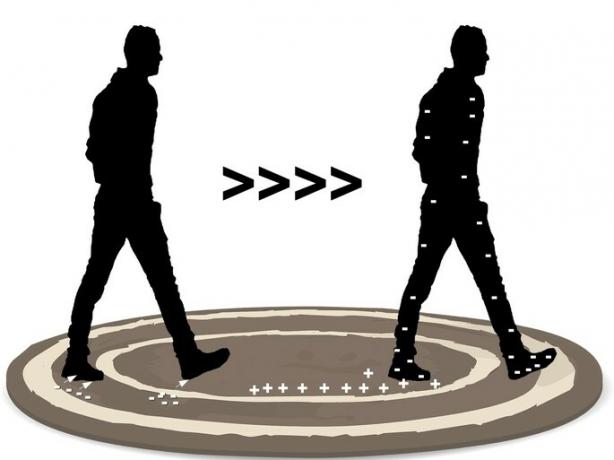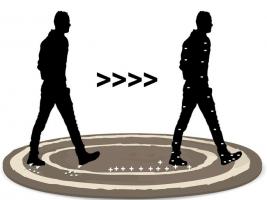The types of electricity that exist and examples
Electricity is the set of physical phenomena associated with electric charge. For their study, these phenomena can be divided into two types:
- static or electrostatic: when electric charges are at rest.
- Electric current: when electric charges are in motion.
Electric charge is a property of matter, as is mass. But unlike mass, charged particles can be divided into two classes, positive and negative. Charges of one class repel each other, while they attract members of the other class.
In nature, electrons and protons are the carriers of electric charge. The charge of both is exactly the same in magnitude, however, that of the proton is positive and that of the electron is negative. Thus, a body with an excess of electrons acquires a negative charge equal to the charge of the electron times the number of excess electrons.
Electrostatics
Static or electrostatic electricity is the interaction between electrical charges at rest. This was discovered in ancient Greece, when people realized that by rubbing amber or jet there was some kind of force that caused the material to attract lint and pieces of material.
Electrostatics can occur in different situations, such as contact between materials, an increase in pressure or temperature, or by the presence of another charge. The charging process, however, involves moving and distributing them, until a new state of equilibrium is reached.
For example, when we rub our shoes against a carpet, we are trapping electrons from the carpet, causing us to have an excess of negative charge. How do we find out? When touching a metal knob, we feel a shock or shock, which is due to the excess charge jumping from our body to the metal object.

Other common cases where electrostatic is produced we have it when rubbing a balloon against the hair dry, when we comb our hair the comb traps electrons from the hair, or when we rub nylon fabrics and wool.
Static charges can occur in undesirable situations and cause damage. To avoid this, the ground connection is made. In grain silos, the friction of the grain against the metal container causes the metal to become positively charged and the grain to acquire a negative charge. When the accumulation of charges is very large, it can produce a spark, causing fires or explosions.
Fires at gas stations or service stations can be caused by the accumulation of static charges. The rubbing of rubber or tires against the pavement causes an accumulation of negative charges in the bodywork. If the vehicle is not unloaded, placing the fuel hose can cause a spark with catastrophic consequences.
Despite the curious examples of electrostatics, it has important applications in technology:
- laser printing: Static is used in laser printers. In this case, the laser beam illuminates the dark areas of a page giving it a negative charge. Positively charged ink particles adhere to these regions and the image is copied.
- static painting: vehicles and planes are painted thanks to static. For this, the object to be painted is negatively charged and then the positively charged paint is applied. This gives a smooth and homogeneous finish.
Electric current

Electric current is the net flow or passage of electric charge through a medium. It can be considered as electricity in motion, the type of electricity with which we are best related and accustomed.
The first scientists to realize the nature of electric current were the Italians Luigi Galvani (1737-1798) and Alessandro Volta (1745-1827). The close relationship between electric current and magnetism was discovered by Hans Christian Oersted (1777-1851), which later led the Englishman Michael Faraday (1791-1867) to produce electrical electricity using magnets.
The conduction of the electric current depends on the resistance of the materials to the displacement of charges, thus we have:
- Insulators: they are materials that do not conduct electricity, such as wood or oil.
- Conductors: allow the passage of electricity, such as metals and ionic solutions.
- Semiconductors: have intermediate electrical properties between insulators and conductors, such as silicon and germanium.
Modern life as we know it is a product of electric current:
- operation of household appliances,
- Industries;
- lighting and district heating;
- Industrial electrical power distribution systems.
You may also be interested in seeing:
- Alternating current and direct current
- Conductors, insulators and semiconductors
References
Cevallos, A. (1996). Let's talk about electricity.
Electricity. (1986). Salvat encyclopedia of science and technology. Salvat Publishers. Spain.
Hadzigeorgiou, Y. (2006). Humanizing the teaching of physics through storytelling: the case of current electricity. Phys. Ed. 41:42. DOI: 10.1088/0031-9120/41/1/003
Young, H. D., Freedman, R.A. (2009) University Physics, with Modern Physics Volume 2. 12 ed. Pearson Education, Mexico.


